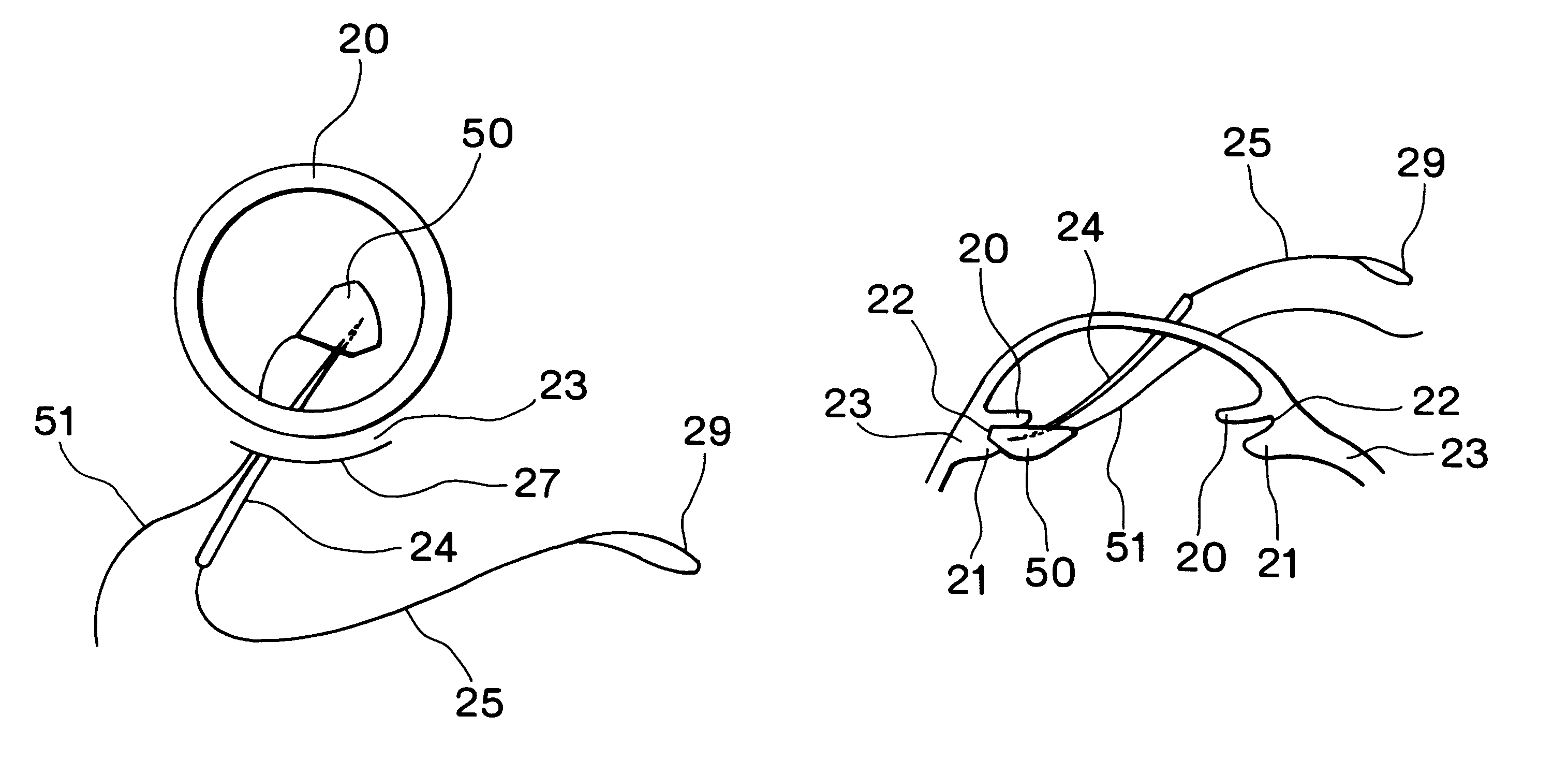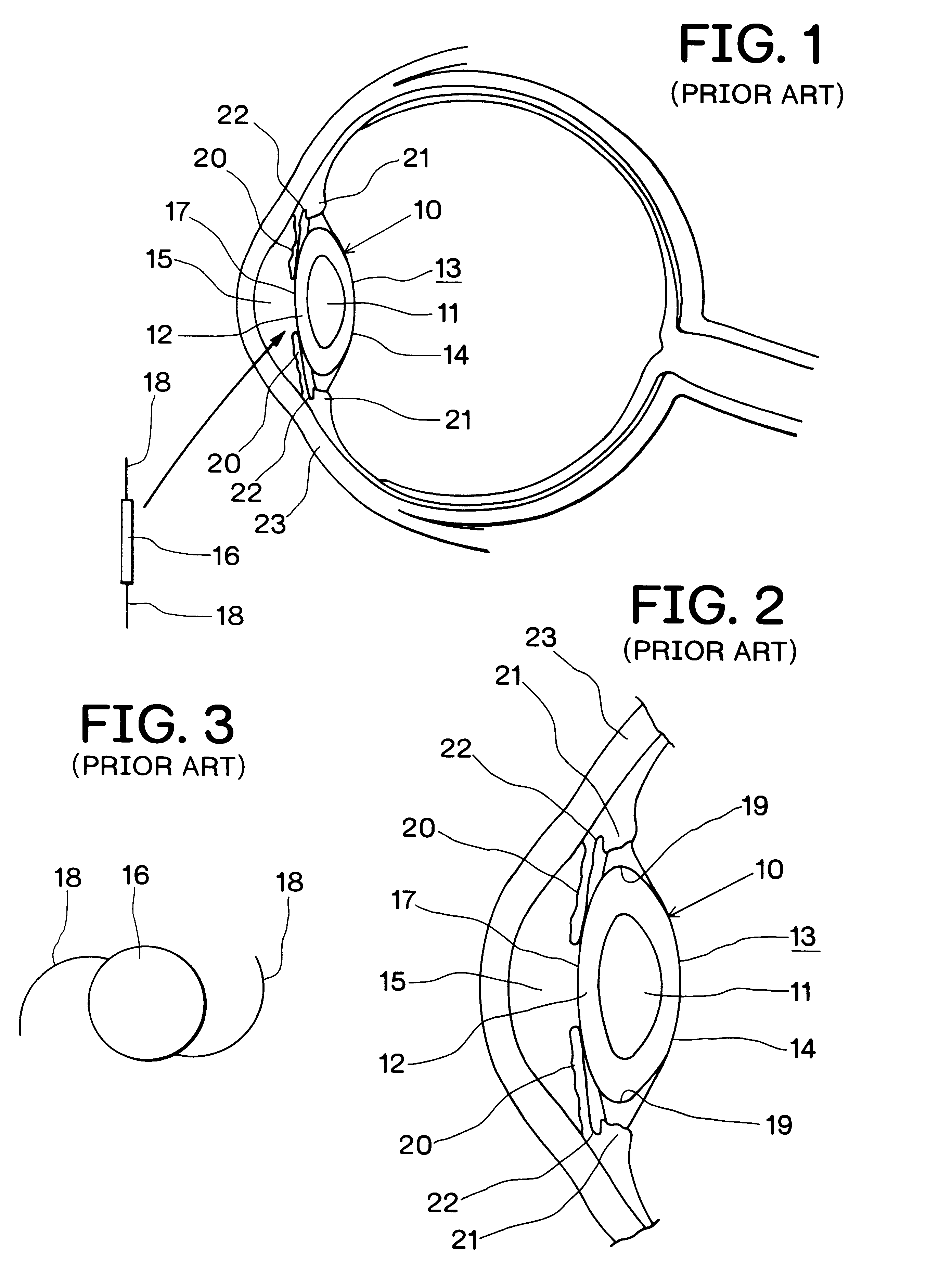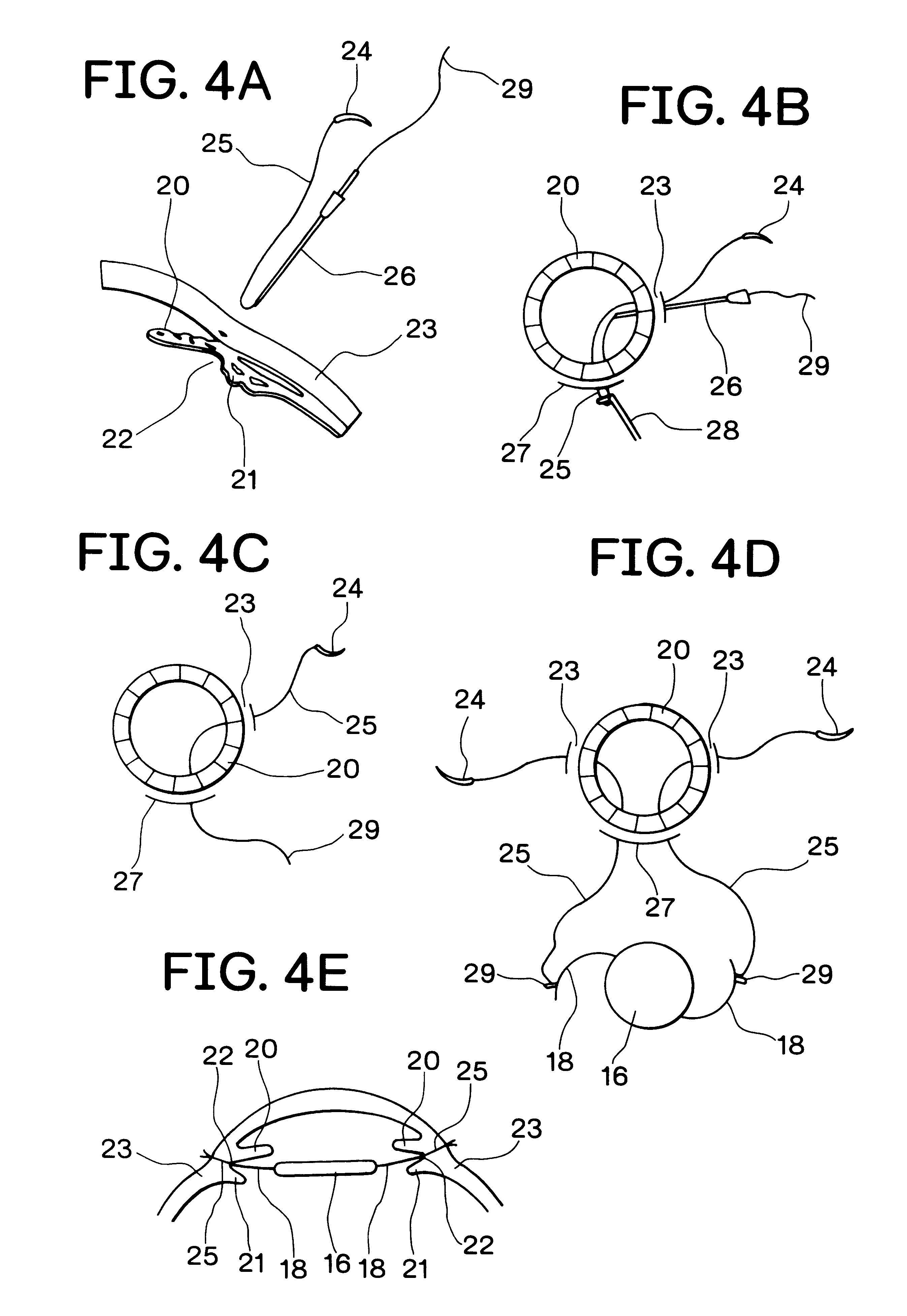Intraocular lens insertion device
a technology of intraocular lens and insertion device, which is applied in the field of intraocular lens insertion device, can solve the problems of obsolete anterior chamber lens, inability to use intraocular lens, and inability to meet patient needs
- Summary
- Abstract
- Description
- Claims
- Application Information
AI Technical Summary
Benefits of technology
Problems solved by technology
Method used
Image
Examples
Embodiment Construction
The preferred embodiment of the present invention will be described with reference to the accompanying drawings. As shown in FIG. 6 to FIG. 8, an intraocular lens insertion device according to the present invention comprises a pad 50 formed by an elastic element harmless to a living body such as silicon rubber or silicon sponge, and a drawing thread 51 mounted at a rear portion of the pad 50. The insertion device is used when the posterior chamber lens 16 is mounted on an eye which has no lens capsule 13, i.e., no site for supporting the posterior lens 16.
The pad 50 is substantially arc-shaped in a plan view, and an upper face 52 of the pad 50 is substantially flat as shown in FIG. 7. An inclined surface 53' on the front side of a lower surface 53 of the pad 50 is inclined toward the upper surface 52, where a taper-shaped insert portion 54 is formed. The pad 50 has a thickness of 1.0 to 2.0 mm at the thickest center thereof. While in use, as shown in FIG. 9A, a tip end of the straig...
PUM
 Login to View More
Login to View More Abstract
Description
Claims
Application Information
 Login to View More
Login to View More - R&D
- Intellectual Property
- Life Sciences
- Materials
- Tech Scout
- Unparalleled Data Quality
- Higher Quality Content
- 60% Fewer Hallucinations
Browse by: Latest US Patents, China's latest patents, Technical Efficacy Thesaurus, Application Domain, Technology Topic, Popular Technical Reports.
© 2025 PatSnap. All rights reserved.Legal|Privacy policy|Modern Slavery Act Transparency Statement|Sitemap|About US| Contact US: help@patsnap.com



